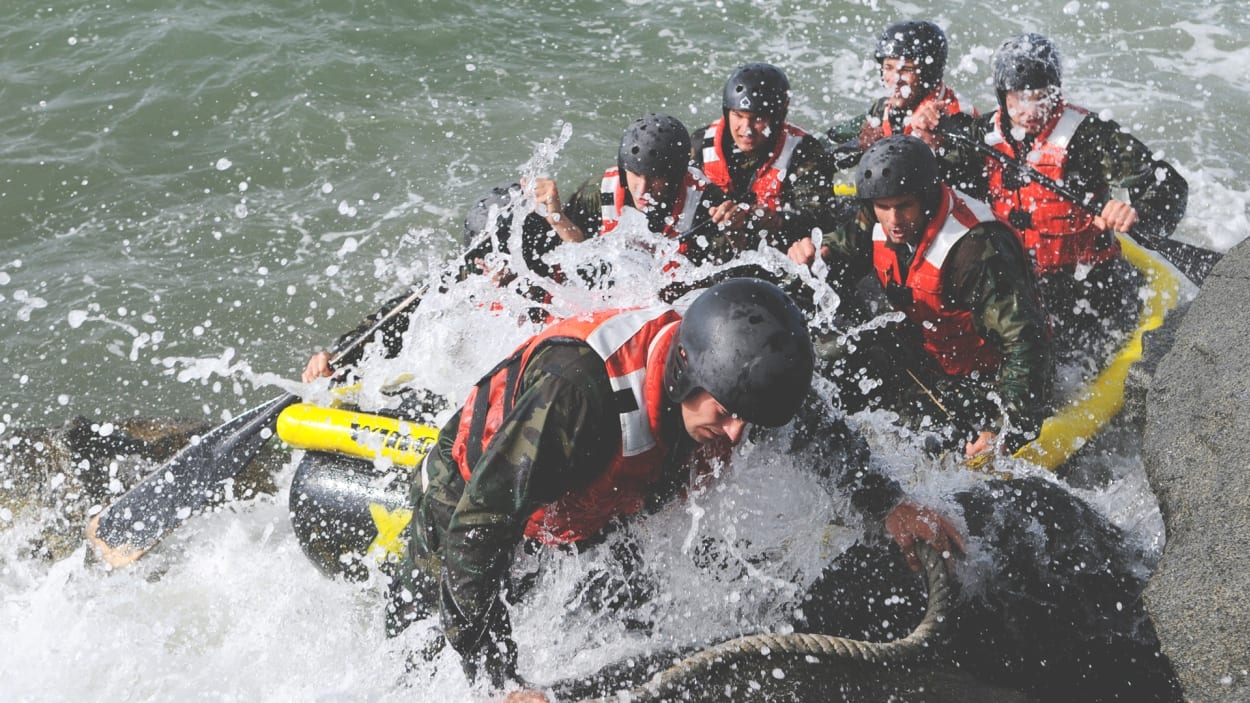3 steps Navy SEALs use to make decisions
From what to wear to what to tackle first at work, we make thousands of decisions every day. Some are trivial, like choosing oatmeal instead of avocado toast. But other decisions can have serious consequences for yourself or others. When making those choices, it can be easy to get caught up, methodically weighing all your options. While it can feel like a sensible process, it can also cause you to miss out on opportunities. Sometimes you just need to make the call.
“With so much information out there, a lot of people get analysis paralysis,” says Ryan Angold, former Navy SEAL and CEO of ADS, Inc., a military equipment supplier. “You want to do your research and you want to access all the resources you have so you can make the right decision. But you can’t sit in analysis paralysis forever. Ultimately, there’s no 100% perfect decision.”
“All decisions are basically the same,” says VMWare Chief Digital Transformation Officer Mike Hayes, former Navy SEAL commander and author of Never Enough: A Navy SEAL Commander on Living a Life of Excellence, Agility, and Meaning.
During Hayes’ 20-year career with the Navy SEALs, he was Commanding Officer of SEAL Team TWO, leading a special operations task force in Afghanistan that included 1,100 aircraft bombing missions. Making life-or-death decisions requires the same process as making any low-stakes decision.
“Whether I’m making an investment decision on what the company should do right now or I’m deciding what operations the SEALs should go on, it comes down to the same decision-making framework,” he says.
1. Gather Input
When you’re a leader or a high-performing member of the team, you’ve likely built up a set of experiences from which you can draw.
“The requirement in SEAL teams is that you have you’ve gone through multiple different scenarios, you’ve trained for the most extreme environment, the most challenging environment, the worst-case scenarios,” says Angold. “These reference points are helpful. You can say, ‘Okay, we’ve seen something like this before.’ Maybe this isn’t the exact scenario—it never is. But you’ve learned how the team works and can make quick decisions.”
Gathering input from others is key. Hayes, who served as a White House Fellow and Director of Defense Policy and Strategy at the National Security Council under the Bush and Obama administrations, says it’s best to tap people who don’t think like you.
“Too often, we tend to seek out like-minded input,” he says. “Artists tend to hire artists and engineers hire engineers. By getting input from people who don’t think like us and by having a culture that celebrates differences and raising other ideas, you help people be comfortable saying things like, ‘Hey, sir, I don’t think that’s a great idea. Here’s how I would do it.’ That framework enables the best possible decisions.”
Hayes suggests generating the best ideas you possibly can. Get them all on the table, and then have a process for how the best idea rises to the top. “We did it by listening to different voices,” he says. “I took my own decision-making process and compared it against a bunch of other inputs. Then you can decide what’s the best thing to do.”
“Too many leaders think they have to make the decision themselves,” adds Angold. “Relying on your team is not a sign of weakness. Strong leaders leverage their resources.”
2. Decide When to Decide
The first decision in decision making isn’t the decision, says Hayes. “The first decision is when to make your decision,” he says. “That’s the thing that most people get wrong.”
Knowing when to make a decision relies on getting the best possible inputs needed to make the decision as quickly as you can. Sometimes the decision time is 30 seconds, such as deciding when to drop a bomb. Other times the decision time could also be two weeks. You can even decide not to decide.
“At some point, the value of those extra inputs in your input streams costs more than the time associated with getting more inputs,” says Hayes. “At that inflection point is when you want to make your decision. You start losing value by waiting longer. As a commander of the Special Operations Task Force, I often said, ‘No, we’re not we’re not doing this. It doesn’t make sense.’ We made the decision to not do something that was being presented.”
Knowing when you’re at the inflection point takes experience, says Hayes. “It’s quantitative and qualitative,” he says. “There are times when you’re getting more information that’s utility to your decision, but there are other times where you need to operate in instinct. Instinct is really a set of experiences that you can’t quite crystallize, but that you extract logic from.”
Waiting too long can also impact the decision, says Angold. “You can’t sit there forever,” he says. “People are waiting, and other decisions are being made based on the decision you make. Sometimes waiting too long, ultimately takes away the impact of the right decision, because you’ve hesitated too long.”
3. Be Willing (and Ready) to Course Correct
After making the decision, it’s possible you made the wrong one. Hayes and Angold say humility—intellectual and real—will help you get to the right decision.
“When making decisions, a lot of senior leaders let their ego get in their way,” says Hayes. “They think that reversing course is going to make them look bad. You need to be comfortable saying, ‘There’s new information, let me reassess. We’re going to reverse course.’ That is the ultimate sign of leadership because it’s a sign of comfort in your own skin and not needing to look good in front of an organization. Instead, you’re putting the organization before self and doing the right thing.”
Angold agrees. “It takes a lot of humility for someone to be able to recognize it was the wrong call,” he says. “That’s where the communication is important and having that transparency with your team. You can gain a lot of additional trust from your team, when you acknowledge a wrong decision.”
Having a willingness to fail and then course correct helps you with your decision-making speed. “If you know you can adjust, it does enable you to make a decision quicker,” says Angold. “We don’t want to take on risks … But if you are leader who is empathetic, humble, and transparent, and who leads by example, you can make a quick decision and know that if you make the wrong one, your team will still have your back because they trust you’ll fix it.”
Fast Company , Read Full Story
(28)



